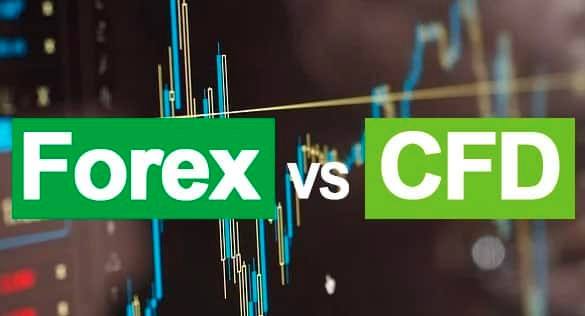Click Here: After you read it, Daily Routine with WikiFx visit IC website
CFD and forex trading are popular among traders due to their large leverage. Currency exchange is the world's oldest form of trading, dating back thousands of years, while CFDs are a relatively new market, dating back only about 20 years.
Investing in and trading CFDs has its benefits and drawbacks, especially for new traders. In this post, we will compare and contrast CFD trading with Forex trading.
So, CFD?
A CFD is a contract between a buyer and a seller that says that the buyer must pay the seller the difference between the current value of an asset and its value at contract time.
This type of investing gives for a lot of freedom. Traditionally, you acquire an asset hoping for it to go higher. With CFD trading, your options are significantly broader. When you buy the contract, you can speculate on price changes.
Every point the instrument's price moves in your favor is multiplied by the amount of CFD units you bought or sold. You lose money every time the price moves against you.
CFDs and Forex: Comparative Analysis
While there are some similarities and overlaps between these two markets, they are vastly distinct. Whereas Forex focuses on trading currency pairings, CFDs offer a variety of trading choices.

CFDs and Forex Identicals
Leverage
Forex and CFD trading are both leveraged. This allows traders to open positions larger than their capital can normally support.
This is because brokers provide extra capital in the form of leverage for every trade made on a forex or CFD platform.
2. Avoid physical asset transfers
CFD and forex trading avoid physical asset transfers. You can buy them both over the counter (OTC) and trade them through a network of financial institutions. Their trades are usually executed similarly.
3. Long or short?
You can trade long or short in both markets. Trading forex and CFDs has this specific edge. Any direction is possible for traders to speculate. These markets are exceedingly volatile. If you think the financial asset will do well, you can acquire it. If not, you expect the asset to depreciate, allowing you to sell short.
4. Fee
The only cost of trading CFDs and Forex is the spread, unlike other trading instruments that impose commissions and other finance fees.
CFD vs Forex differences
1. Base assets
The fundamental distinction between Forex and CFD trading is that Forex is purely currency-based, whereas CFDs include a wide range of markets, including indices, metals, and energy. FX trading involves trading one currency against another in pairs and in consistent lot sizes.
2. Time swaps
CFD trading does not follow the famed “24/7” FX trading methodology (which only means that trades can be made 24 hours a day throughout the work week). Instead, CFDs are constrained by the market's trading hours.
4. Economic Factors
Diverse factors affect both markets. The currency market is heavily influenced by global macroeconomic events and forces. There are several elements that can affect the global economy such as substantial swings in employment, risk attitude, monetary policy expectations and their impact on GDP, international political upheavals and even environmental problems.
The CFD market's price swings, on the other hand, are influenced by the instrument's individual variables. For example, supply and demand for a given commodity can alter over time.
Cons of CFD Trading
Prons:
1. More markets reachable
The most essential one is that the CFD market opens up a new world of options beyond the Forex market. And all on the same trading account.
Gain from market declines
Instead of buying contracts, you sell them to open a short CFD position. Then you buy the equal number of CFDs to settle your trade.
This allows you to profit when markets decline, adding another dimension to your trade.
3. Leverage trading
CFDs allow leveraged trading. This enables you to control a larger stake with less capital. Some stocks barely move, so you won't make much money unless you invest a lot of money. Leverage allows you to profit from modest market moves. Obviously, this adds danger, which I discuss in the disadvantages.
Cons:
1. You may lose all your money.
Inflation is unusual. Stocks also tend to bounce back following losses. In CFD trading, if your position falls below a specific level, it closes. No hope of recovery.
Margin Requirements
Unlike other forms of leveraged trading like forex, the broker sets the margin requirements for each market. This can hinder your larger trading plan and add an extra layer of planning to the pre-trade process to examine the feasibility of a prospective return.
3. Overtrading is easy.
The rapidity of CFD trading makes it simple to overtrade. Overtrading is a common rookie mistake. And I see that all the time on CFD platforms. Traders who lack emotional control can easily keep opening positions or worse, closing positions for small profits. Big blunders.
Conclusion
Forex and CFDs are both popular trading choices that can be profitable when handled properly. Both interesting trading opportunities have benefits and drawbacks. Knowing the differences between CFDs and FX might help investors make smarter trading decisions. It is possible to use both, but for beginners, it is best to stick to one or the other.
Leave a Reply